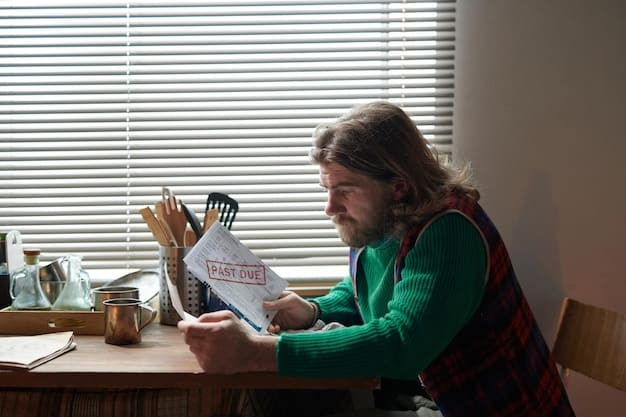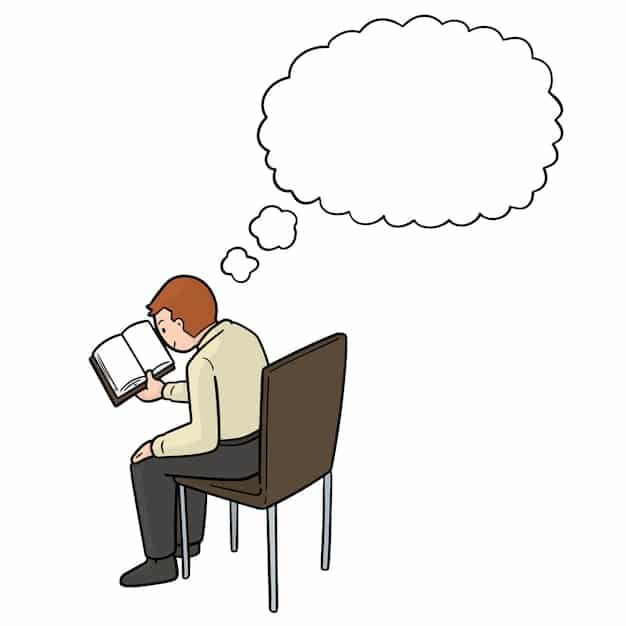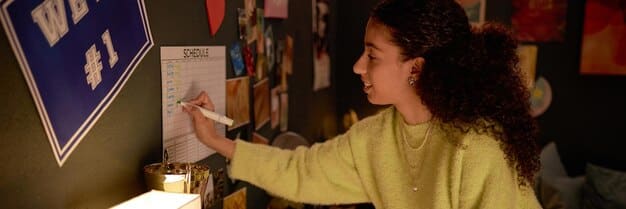Master the Roman Room Technique: Ace Your US History Exam

The Roman Room Technique, also known as the Method of Loci, is a powerful mnemonic strategy that uses spatial memory to enhance recall, making it an ideal tool for students aiming to memorize and retain 50 key facts for their next US History exam.
Are you struggling to remember important dates, names, and events for your upcoming US History exam? The ultimate guide to the Roman Room technique can transform the way you study by helping you recall up to 50 facts with ease.
What is the Roman Room Technique and Why Use It?
The Roman Room technique, also called the Method of Loci (Latin for “places”), is an ancient mnemonic device attributed to the Roman orator Cicero. It leverages spatial memory, which is exceptionally strong in humans, to help you remember information more effectively. But why should you use this for your US History exam?
Imagine walking through a familiar place, like your house or a school building. As you mentally stroll through each room, you associate specific facts or concepts with distinct locations. This creates a vivid mental map that you can later revisit to retrieve the information. This makes recalling complex historical events much easier.
The Power of Spatial Memory
Spatial memory is the part of your memory that records information about your environment and its spatial orientation. It’s why you can easily navigate your home in the dark or remember the layout of your childhood bedroom. The Roman Room technique taps into this innate ability.
By associating historical facts with specific locations in your mental “room,” you leverage your brain’s natural inclination to remember spatial arrangements. This makes recall more intuitive and less reliant on rote memorization.
Benefits for US History Students
For US History students, the Roman Room technique offers several compelling benefits:
- Enhanced Recall: Remember critical dates, figures, and events more easily.
- Structured Learning: Organize your knowledge into a coherent and easily retrievable structure.
- Reduced Stress: Feel more confident during exams, knowing you have a reliable memory strategy.
- Engaging Study: Turn studying into an interactive and imaginative process.
In essence, the Roman Room technique offers a powerful and engaging way to master US History, turning a potentially daunting task into an enjoyable and effective learning experience. By the end of this guide, you’ll be able to apply this technique to help you master 50 facts for your next US History exam.
Setting Up Your Roman Room for US History
Before you can start memorizing facts, you need to create your “Roman Room.” This is a mental space where you’ll store the information you want to remember. The key is to choose a place that is familiar and easy to visualize. Let’s walk through the steps of building your memory palace.
This doesn’t necessarily mean that you have to create the mental space within a room. The technique works even if the mental space you create is more open than a conventional room. The key is building a mental space that is natural and familiar to you.
Choose a Familiar Location
Select a place that you know well, such as:
- Your childhood home
- Your current house or apartment
- Your school building
- A familiar park or garden
The more familiar you are with the location, the easier it will be to navigate it in your mind’s eye.
Define Distinct Locations
Identify specific locations within your chosen space. These should be distinct and memorable. For example, in your house, you might choose:
- The front door
- The living room couch
- The kitchen table
- Your bedroom window
Aim for at least 50 distinct locations if you want to recall 50 facts. These locations will serve as your “memory anchors.”
Visualize Your Route
Establish a clear route through your Roman Room. This will ensure that you can easily move from one location to the next without getting lost. It will bring a sense of structure and organization to the mental space.
Walk through your chosen location in real life (if possible) and mentally map out your route. Pay attention to the details and create a vivid mental image of each location.
By carefully setting up your Roman Room, you lay the groundwork for effective memorization. The more detailed and familiar your mental space, the easier it will be to attach and retrieve information.
Associating US History Facts with Locations
Now that you have your Roman Room set up, it’s time to start associating US History facts with specific locations. This is where the magic happens. Let’s look at how to effectively link information to your mental space.
What you will learn is how to effectively use imagery to connect each fact or idea to the location that you have decided on. It is a matter of making effective connections so that you can reinforce your memory of the historical fact at hand.
Create Vivid Mental Images
When associating a fact with a location, create a vivid and memorable mental image. The more unusual and exaggerated the image, the better you’ll remember it. Make sure the connections are natural and direct so that you do not forget them.
For example, if you want to remember that the Declaration of Independence was signed in 1776, and your first location is the front door:
- Imagine the front door is covered in fireworks representing July 4th.
- Visualize Benjamin Franklin knocking on the door with a giant quill pen.
- Picture the number “1776” emblazoned on the door.
Use All Your Senses
Engage all your senses when creating mental images. What do you see, hear, smell, taste, and feel? The more sensory details you incorporate, the stronger the memory will be.

For instance, if you’re associating George Washington crossing the Delaware River with your living room couch:
- See Washington standing stoically in the boat.
- Hear the sound of cracking ice and the shouts of the soldiers.
- Feel the cold wind and the spray of icy water.
Review and Reinforce
After associating all 50 facts with your locations, review your Roman Room regularly. Mentally walk through your chosen space, recalling the images and facts at each location. This helps strengthen the connections and prevent forgetting.
Start with a daily review, then gradually increase the intervals. The more you revisit your Roman Room, the more ingrained the memories will become.
By following these steps, you can effectively associate US History facts with locations in your Roman Room, creating a powerful and reliable memory system. Remember, the key is to be creative, engage your senses, and review regularly.
Applying the Roman Room Technique to US History
Now, let’s get practical. How can you use the Roman Room technique to memorize specific US History facts? We’ll walk through an example, providing tips and strategies along the way. Follow the examples below to implement the Roman Room technique for your own review.
These examples can inspire you to develop your own Roman Rooms. You will internalize these examples more, as they will be more personally meaningful to you.
Example: Memorizing Key Events of the American Revolution
Let’s say you want to memorize the following key events of the American Revolution:
- The Boston Tea Party (1773)
- The Battles of Lexington and Concord (1775)
- The Declaration of Independence (1776)
- The Battle of Saratoga (1777)
- The Treaty of Paris (1783)
Choose five locations in your Roman Room. For example:
- Your front door
- Your living room couch
- Your kitchen table
- Your bedroom window
- Your backyard tree
Creating Associations
Now, create vivid mental images for each event and associate them with your chosen locations:
- Front Door: Imagine your front door is overflowing with tea leaves, and colonists dressed as Native Americans are throwing them into the street. The number “1773” is written in tea stains on the door.
- Living Room Couch: See miniature soldiers battling on your couch, with toy muskets firing. The date “1775” is embroidered on a throw pillow.
- Kitchen Table: Visualize Thomas Jefferson sitting at your kitchen table, writing the Declaration of Independence. The date “1776” is etched into the tabletop.
- Bedroom Window: Picture British soldiers surrendering outside your bedroom window after the Battle of Saratoga. The date “1777” is painted on the glass.
- Backyard Tree: See Benjamin Franklin and other diplomats signing the Treaty of Paris under your backyard tree. The date “1783” is carved into the tree trunk.
Tips for Effective Association
Here are some additional tips for creating effective associations:
- Be Creative: The more imaginative your images, the better.
- Add Emotion: Link emotions to your images to make them more memorable.
- Incorporate Humor: Funny or absurd images are easier to recall.
Review and Practice
After creating your associations, review your Roman Room regularly. Mentally walk through your chosen locations, recalling the images and facts at each stop. The more you practice, the stronger your memories will become.
Troubleshooting and Common Mistakes
Like any memory technique, the Roman Room can have its challenges. Let’s address some common mistakes and how to troubleshoot them. This will help ensure that you get the most out of this powerful mnemonic device. Consider some adjustments and experimentation to make this technique the most effective for you.
As with anything, practice makes perfect. The more you practice, the more quickly you will develop and overcome the challenges outlined below.
Problem: Difficulty Visualizing Locations
Some people struggle with visualizing their Roman Room. If you find it difficult to create mental images, try these approaches:
- Use Real-Life Reminders: Physically walk through your chosen location and take photos or videos to jog your memory.
Using photographic prompts will help to create a strong point of association.
- Draw a Map: Create a physical map of your Roman Room, labeling each location.
- Start Small: Begin with a smaller set of locations and gradually expand your mental space.
Problem: Forgetting Associations
Sometimes, you may forget the associations you’ve created. Here’s how to overcome this:

- Review Regularly: Consistent review is crucial. Schedule regular “walks” through your Roman Room.
- Simplify Images: If your images are too complex, simplify them to make them easier to recall.
- Use Mnemonic Devices: Create smaller mnemonic devices within your images to help you remember specific details.
Problem: Confusing Locations
It’s possible to confuse locations within your Roman Room, especially if they are too similar. Here’s how to differentiate them:
- Add Unique Features: Assign unique colors, sounds, or smells to each location.
- Create Barriers: Mentally construct barriers between locations to prevent “bleed-over.”
- Vary the Route: Change your route through the Roman Room to create new associations.
By addressing these common problems and implementing the suggested solutions, you can overcome obstacles and fine-tune your Roman Room technique for optimal memorization.
Advanced Techniques for Mastering US History Facts
Once you’re comfortable with the basic Roman Room technique, you can explore advanced strategies to further enhance your memory skills. These techniques will help you recall even more complex US History facts with greater ease and precision.
These techniques will require more practice. As you advance, you will be taking the Roman Room technique to new levels.
Nested Roman Rooms
Create multiple Roman Rooms, each dedicated to a specific topic or era in US History. For example, you could have one room for the American Revolution, another for the Civil War, and a third for the 20th century. This allows you to organize your knowledge into distinct categories, making it easier to retrieve relevant information.
This technique is particularly useful if you need to memorize a large volume of information. By creating separate mental spaces, you avoid confusion and improve recall.
The Person-Action-Object (PAO) System
Combine the Roman Room technique with the PAO system to memorize numerical data, such as dates and statistics. Assign a person, action, and object to each digit from 0 to 9. Then, create a mental image that combines the person, action, and object associated with a specific date or statistic.
This system allows you to encode numerical information in a memorable and easily retrievable format. For example, if you want to remember that the Civil War began in 1861, you could create an image that combines the person, action, and object associated with the digits 1, 8, 6, and 1.
Interlinking Locations
Create connections between different locations within your Roman Room. For example, you could imagine a pathway or portal that connects your front door to your kitchen table. This helps you create a more cohesive and interconnected mental space, making it easier to navigate and recall information.
Using the Phonetic Number System
This system is a way of encoding data into specific words. Using the system, you can use the consonants to create vivid and memorable connections.
By incorporating these advanced techniques into your Roman Room practice, you can unlock new levels of memory mastery and excel in your US History studies.
| Key Point | Brief Description |
|---|---|
| 🧠 Spatial Memory | Leverages your brain’s natural ability to remember places. |
| 📍 Location Anchors | Choose familiar and distinct locations within your Roman Room. |
| 🖼️ Vivid Imagery | Create memorable mental images to link facts to locations. |
| 🔄 Regular Review | Reinforce your memories by regularly revisiting your Roman Room. |
Frequently Asked Questions
What exactly is the Method of Loci?
▼
The Method of Loci, also known as the Roman Room technique, is a mnemonic device that utilizes spatial memory to enhance recall. It involves associating information with specific locations in a familiar place.
How can the Roman Room technique help with US History?
▼
By creating a “Roman Room” in your mind and associating historical facts with locations within that room, you can create a powerful memory aid for recalling key dates, events, and figures.
How many locations should I have in my Roman Room?
▼
The number of locations depends on how many facts you want to memorize. For example, if you want to memorize 50 facts, you should have at least 50 distinct locations in your Roman Room.
What if I have trouble visualizing my Roman Room?
▼
If you struggle with visualization, try physically walking through your chosen location and taking photos or videos to help you create a more vivid mental image. Draw a map of your space.
How often should I review my Roman Room?
▼
Review your Roman Room regularly to reinforce the memories. Start with daily reviews and gradually increase the intervals as the associations become stronger. Consistent review is key.
Conclusion
In conclusion, the ultimate guide to the Roman Room technique provides a robust method for enhancing memory and recall, especially useful for mastering US History facts. By leveraging spatial memory and creating vivid associations, students can significantly improve their ability to remember and retain information, leading to greater academic success and reduced exam stress.
.
Read more content





